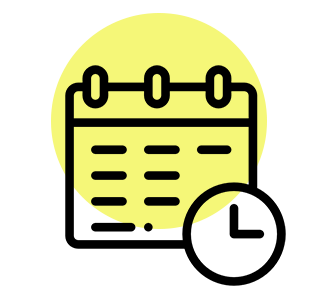Discovery and Planning
The adventure begins! Implementing a new ERP system in an organization is a long iterative process with definite phases (with a tendency to overlap) – even extending beyond “go-live”, the point at which the new system is actively in place. If you’re still not sure about whether or not your organization should invest in a new ERP system check out this past series regarding the Repair or Replace decision. The end destination is a new era of an integrated, growth-friendly business management system, bringing with it, new heights of productivity and effective communication within an organization.
5 Steps for a Successful Discovery

Establish The Project Team
The project team should represent all aspects of the business. There should be someone from Sales, Customer Service, Purchasing, Materials, Operations, Accounting, and IT. Team members should have strong knowledge of current procedures in their area and be active system users with hands on experience, knowing what the current system does as well as its limitations.
The team leader should be someone who is higher up in the organization chain – having an understanding of how the business operates and where the business is heading. Often times an ERP project can be interpreted by others as just an IT project, particularly if a person with an IT background is the team leader. Watch out for this. It must be seen as a project that involves and affects the entire business – not just IT.

Hold Discovery Meetings
This is where members of the implementation team interview members of the project team to get an in-depth understanding of various parts of the business at detail level. The team will want to know what are you currently doing, and what you want to do in the future? They will discuss current processes thoroughly and identify pain points with the current system.

Document Key Processes and Requirements
Overall, this round of documentation will become the foundation for configuring the new system and also helps the implementation team with building out the project plan. This involves meetings with the implementation team and the project team, as well as executive members – looking for red flags, or gaps between the customers’ needs and system capabilities. These holes can greatly affect the requirements of the new system and the better they are understood, the better job the implementation team can do guiding the implementation.
Also, this includes discussing broader strategy with the executive team. It may be that there are new initiatives underway that can impact the requirements of the system. For instance, if the company is planning on opening 30 new stores in the US, there are most likely important implications on how the new system should be set up.

Identify Potential Gaps, Risks, and Solutions
Continuing from the discussions in the previous step, this is where the implementation team will work to identify all of the areas where the current system doesn’t meet the company’s needs. Then, based on those findings, they will begin formulating potential solutions based on the new system. Areas that require work-arounds outside the system like extensive spreadsheets are prime candidates. The team will use this information to formulate suggested solutions for the project team to evaluate and test.

Build The Project Plan
The implementation project plan will serve as a road map for the implementation. Depending on the project it may be fairly detailed or it may be higher level. It will include information from the last three steps and evolve as you work through the upcoming Design and Development processes. Think of it as a sort of backlog list of tasks used to guide the implementation team, the development team and the project team. It is a communication tool for all involved to have visibility of open items and priorities.
The bottom line for the discovery process is that the implementation team and project team must both understand and agree on the business processes and the objectives of the project. The project plan is the end goal of the discovery process and it is the foundation of the rest of the project.
Why Choose PointStar Consulting
We are an award winning cloud services provider in the Asian region with over 14 years of experience in implementing cloud ERP projects and other solutions that help the high growth businesses and start-ups realise the benefits of workflow automation. Headquartered in Singapore, PointStar Consulting has since grown rapidly with regional clients in Singapore, Malaysia, Indonesia, Thailand, Vietnam, Japan, China, Taiwan, and South Korea.
Read our blog about Why a Cloud ERP System Is The Go To Solution For Startups
Schedule For A Free Consultation
Lead Generation
This form is created for lead generation.
"*" indicates required fields

